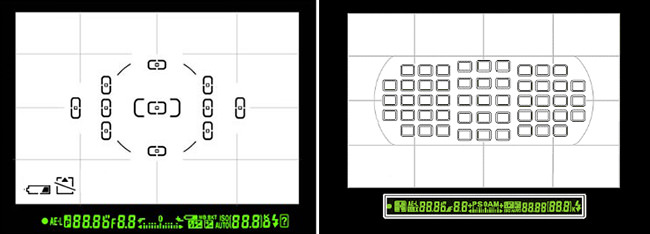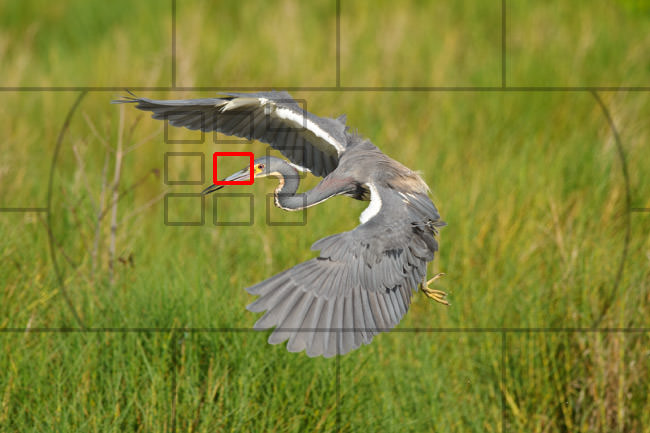Autofocus Area Modes
A major part of focusing is choosing the right autofocus area mode. This is where you tell your camera which sort of focusing strategy you want to apply, so that it can make the best decisions on how to track and follow focus on your subject.
We already have an in-depth guide to autofocus modes that covers all this in detail, so check it out if you want a more information on this topic. However, the important thing is that your autofocus system is made up of focusing points, which correspond to regions that your camera can focus on. For example, here are two separate maps of focus points on DSLRs today:

Usually, a greater number of focusing points is better. So is a larger spread (overall coverage area). It’s easier to track a moving subject when your camera has several focusing points covering a large portion of the image. However, you still need to tell your camera how to use those points, or it won’t be particularly helpful. This is where autofocus area modes come into play:
Not all cameras have every one of these options, and some may have additional area modes as well, especially for video autofocus. The specific names may also be different depending on your individual camera – but this is the general structure of the options you’ll see.
You’ll learn quickly which area modes you like, and how to get the greatest number of keepers in certain situations. However, fully mastering these modes takes plenty of time and practice, and it isn’t the sort of thing you can learn overnight. (Read more, including specific case studies, here.)
 Dynamic AF Area Mode
Dynamic AF Area Mode
A major part of focusing is choosing the right autofocus area mode. This is where you tell your camera which sort of focusing strategy you want to apply, so that it can make the best decisions on how to track and follow focus on your subject.
We already have an in-depth guide to autofocus modes that covers all this in detail, so check it out if you want a more information on this topic. However, the important thing is that your autofocus system is made up of focusing points, which correspond to regions that your camera can focus on. For example, here are two separate maps of focus points on DSLRs today:

Usually, a greater number of focusing points is better. So is a larger spread (overall coverage area). It’s easier to track a moving subject when your camera has several focusing points covering a large portion of the image. However, you still need to tell your camera how to use those points, or it won’t be particularly helpful. This is where autofocus area modes come into play:
- Single-Point autofocus: The camera uses one focusing point to autofocus – the focusing point you’ve selected. This is good when your camera and subject aren’t moving, and you don’t need any tracking capabilities. It can work with continuous autofocus, but it doesn’t track fast-moving objects across multiple points.
- Dynamic autofocus: You select a single focusing point for the camera to use. In this case, though, it can track your subject if it moves into some of the surrounding points (you usually can specify how many the camera pays attention to). This area mode is good for wildlife photography.
- 3D Tracking autofocus: The camera follows your subject as it moves across focusing points. Unlike the standard Dynamic AF-Area mode, you aren’t expected to pan your camera around to keep your subject as close as possible to the original point you selected. This is also good for wildlife photography, although it’s not always as quick or accurate as the simpler Dynamic AF-Area mode.
- Group-Area autofocus: The camera uses multiple autofocus points simultaneously, usually five. It gives all of them equal priority, and focuses on the nearest object located on any of the five points. This is useful for tricky autofocus situations, such as a fast-moving bird in flight.
- Auto-Area autofocus is when your camera automatically scans the scene and decides on your subject (often the closest object to your camera, or a face). We don’t recommend this mode, since it gives you less control.
Not all cameras have every one of these options, and some may have additional area modes as well, especially for video autofocus. The specific names may also be different depending on your individual camera – but this is the general structure of the options you’ll see.
You’ll learn quickly which area modes you like, and how to get the greatest number of keepers in certain situations. However, fully mastering these modes takes plenty of time and practice, and it isn’t the sort of thing you can learn overnight. (Read more, including specific case studies, here.)
 Dynamic AF Area Mode
Dynamic AF Area Mode




تعليق